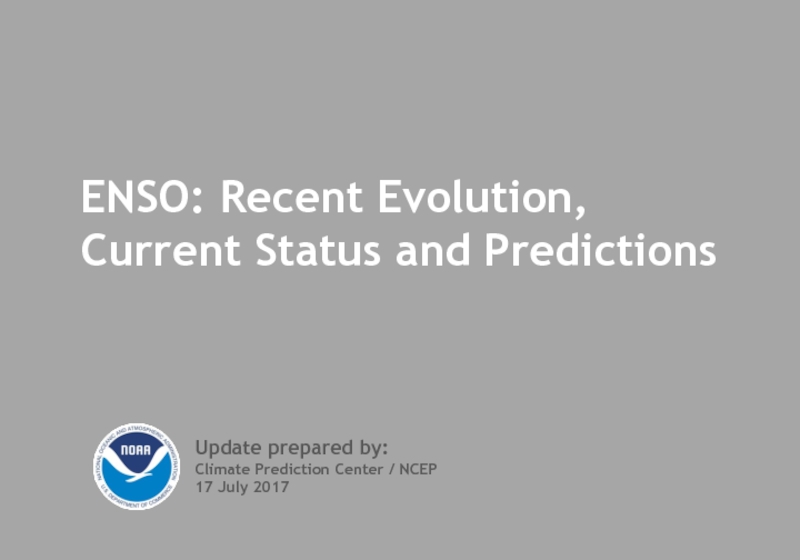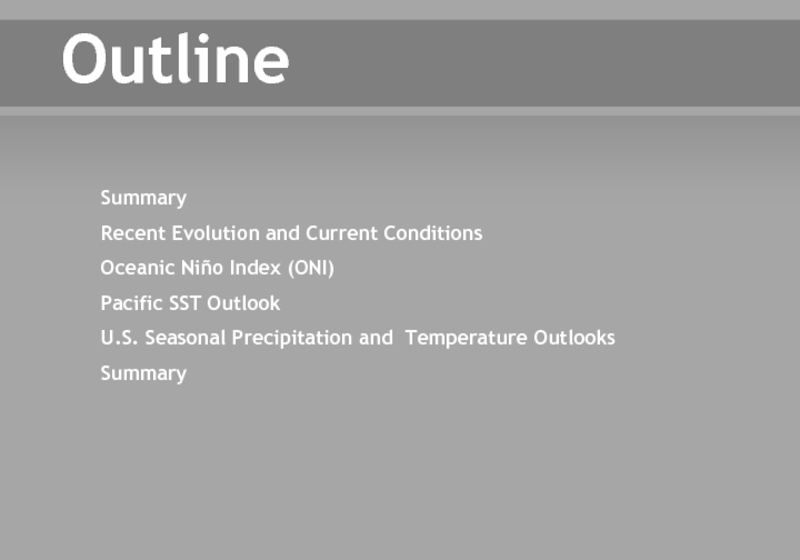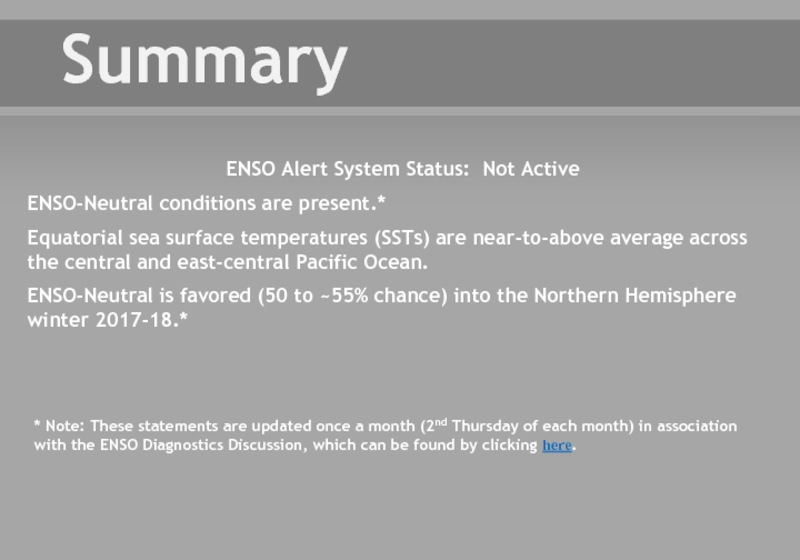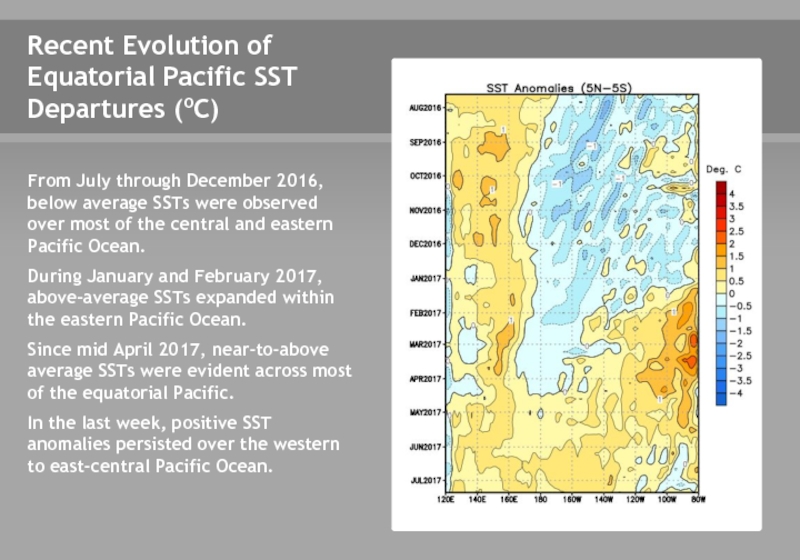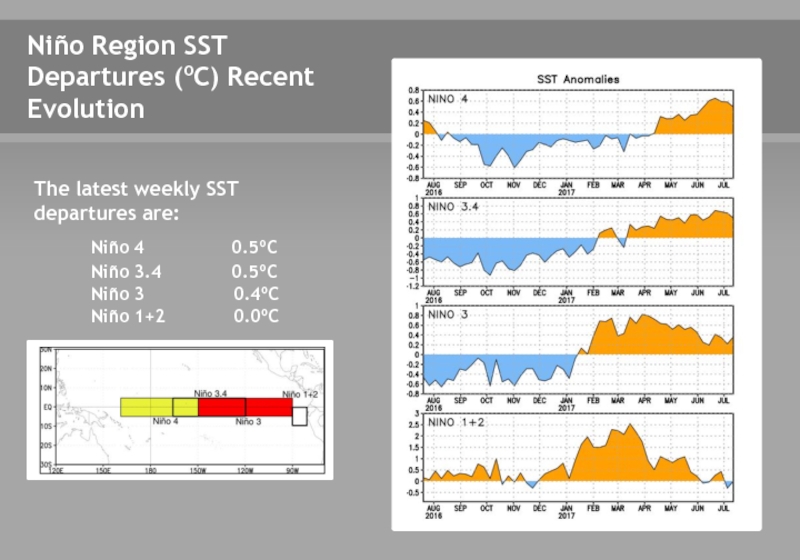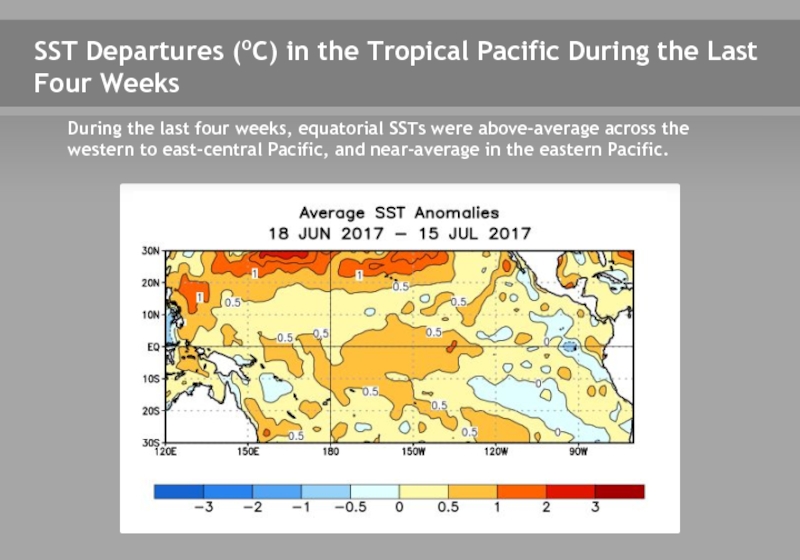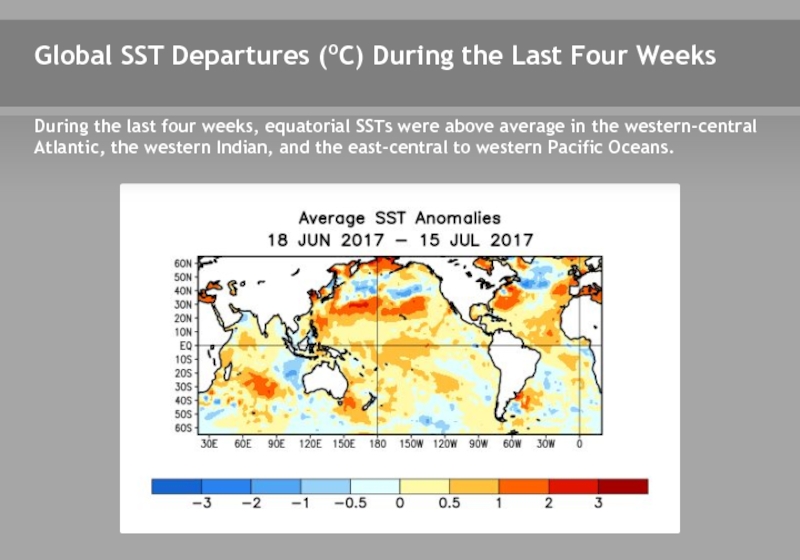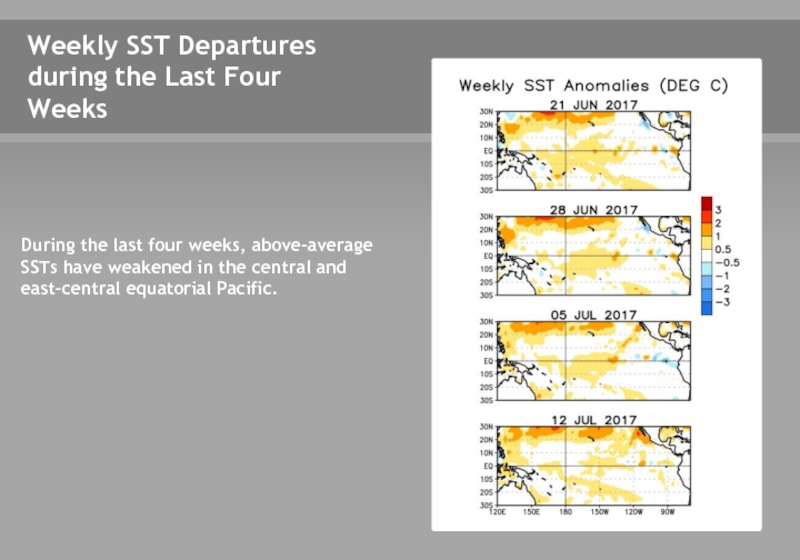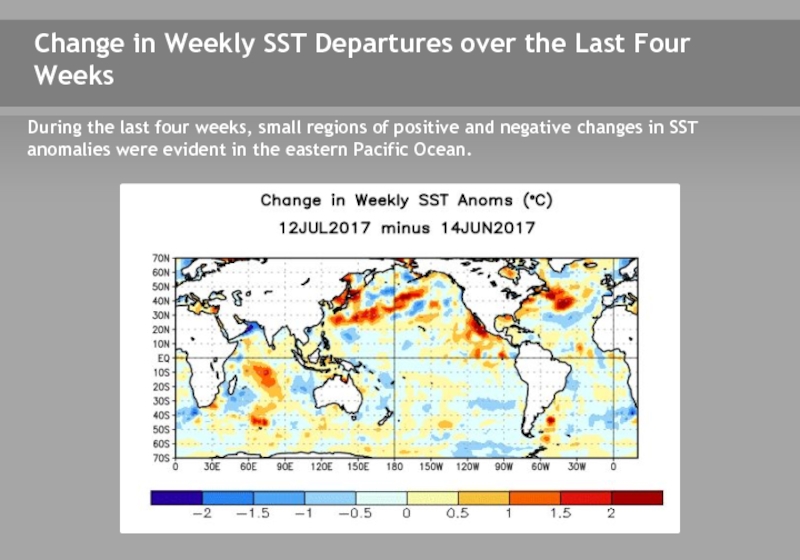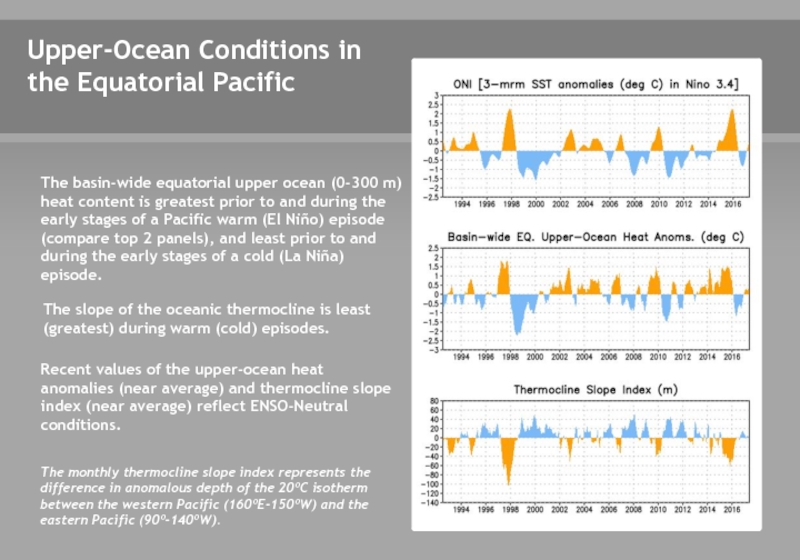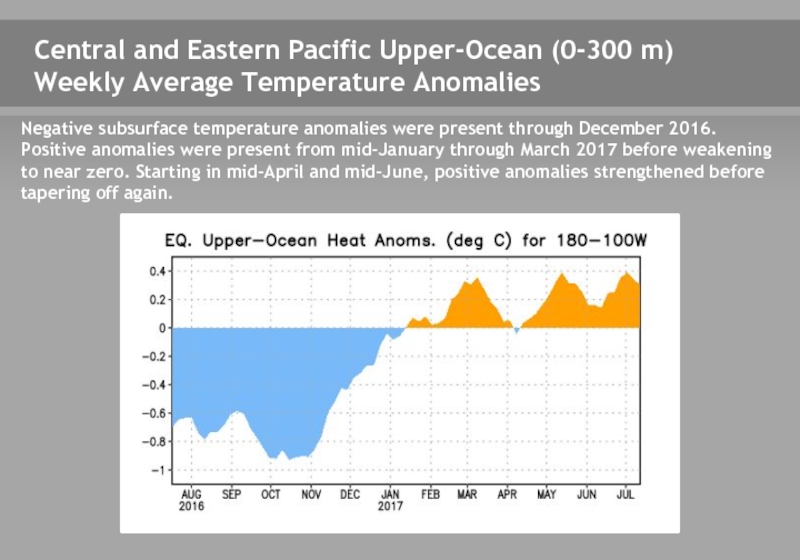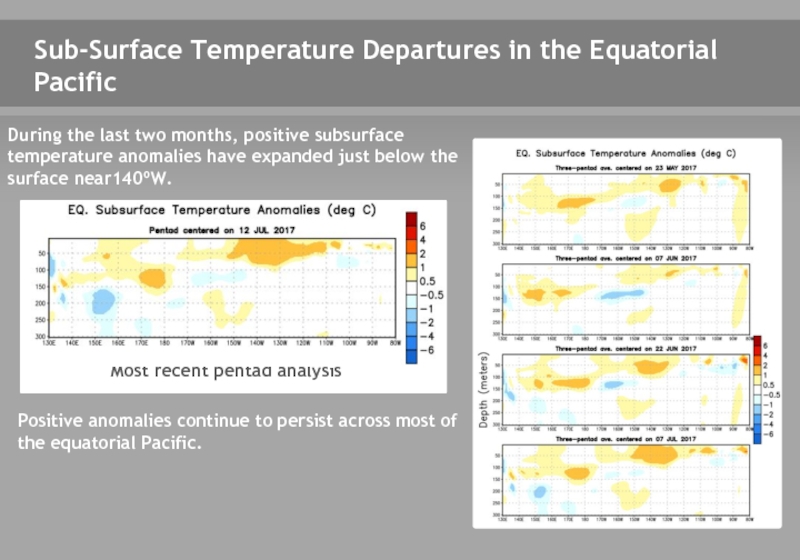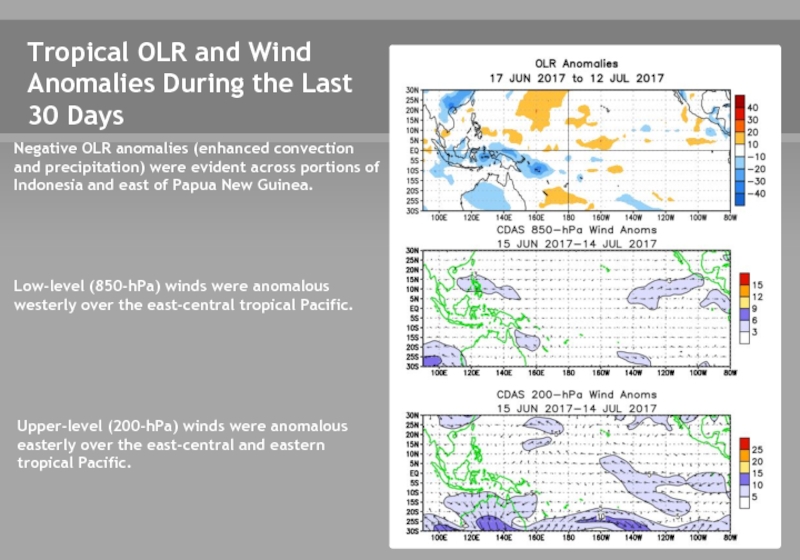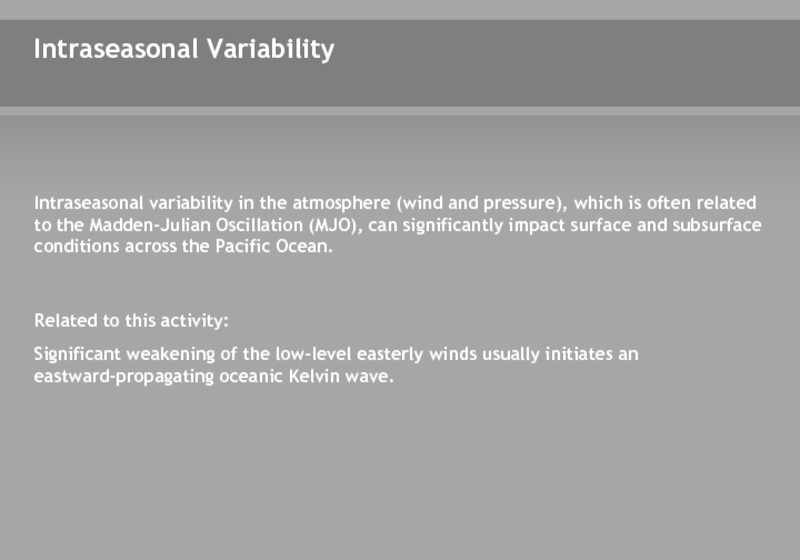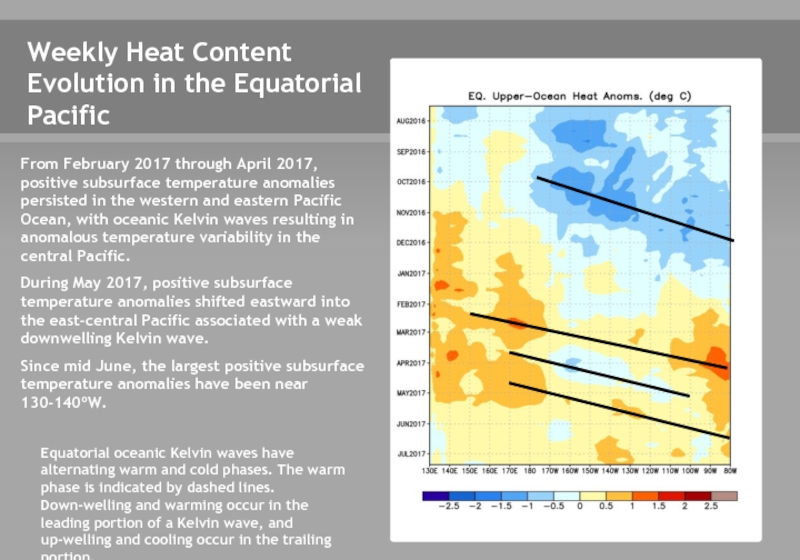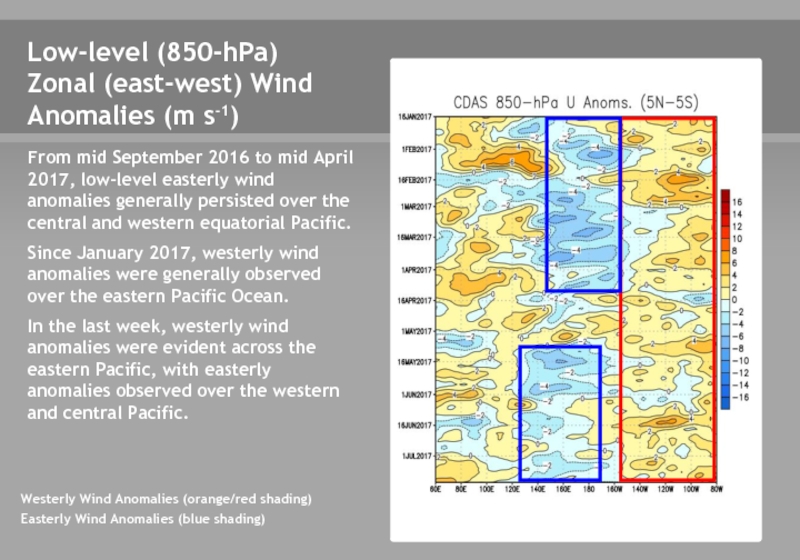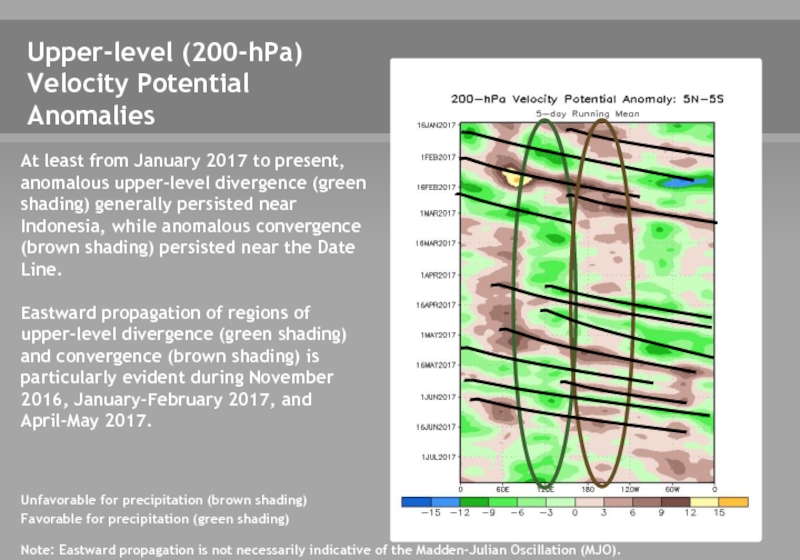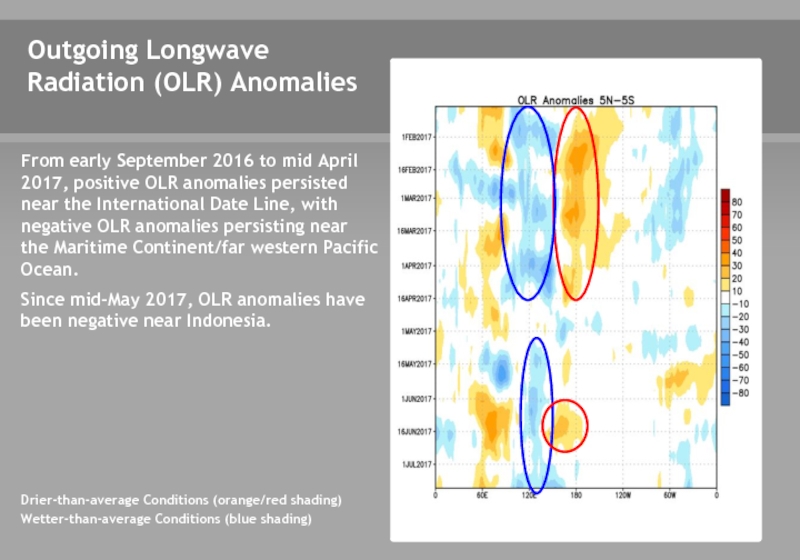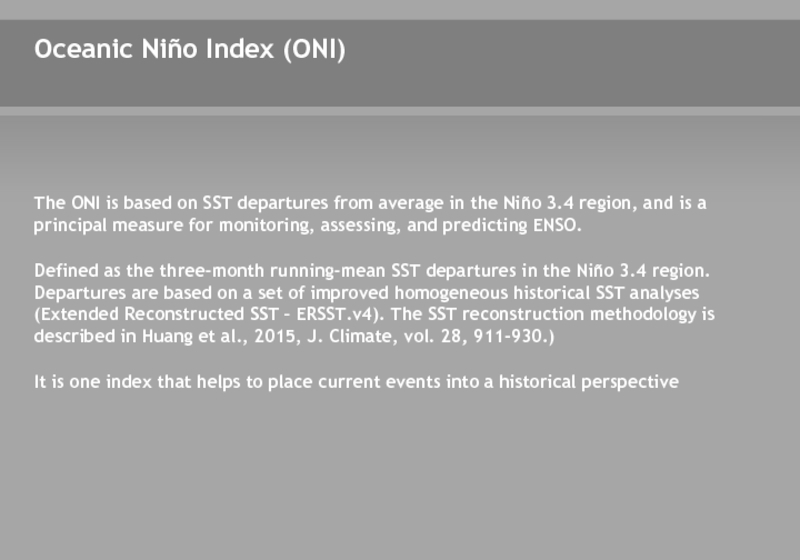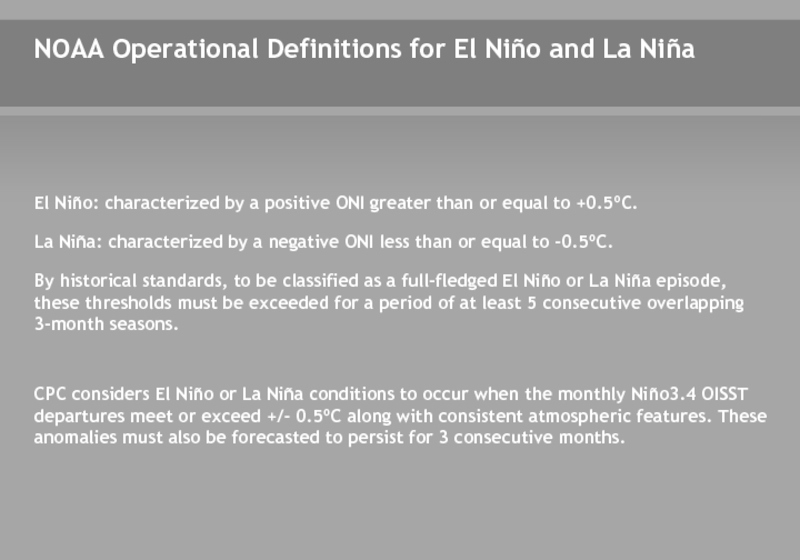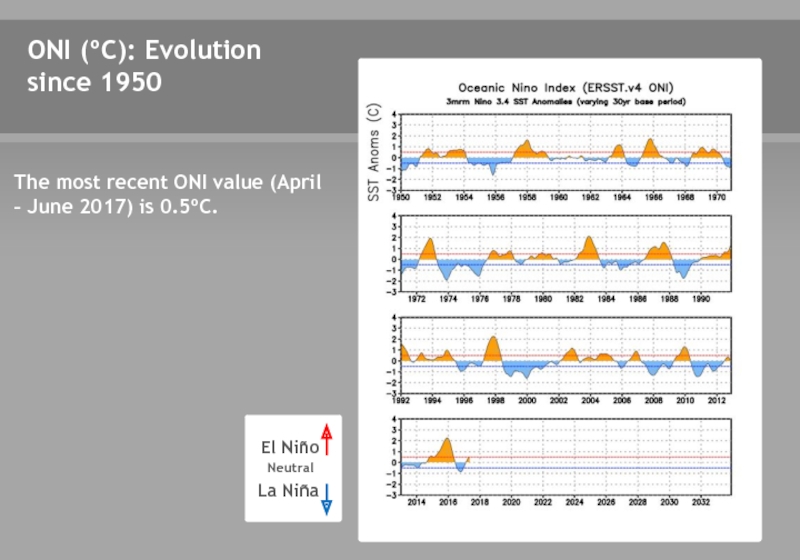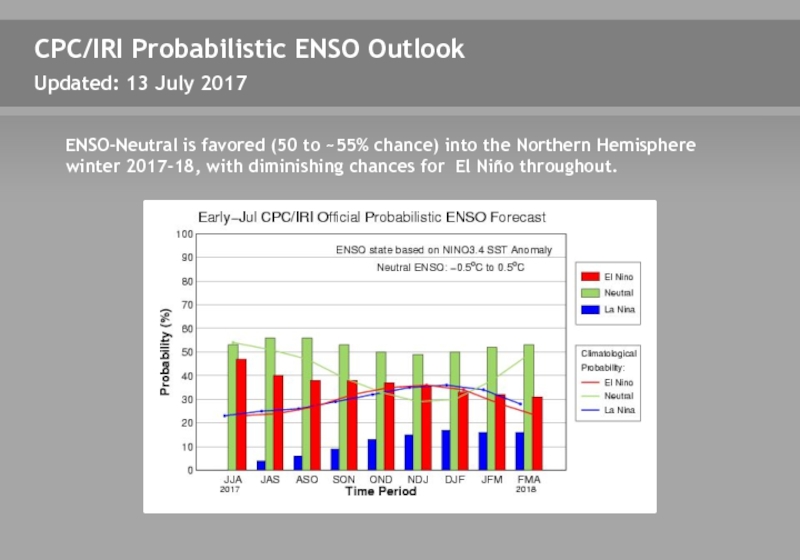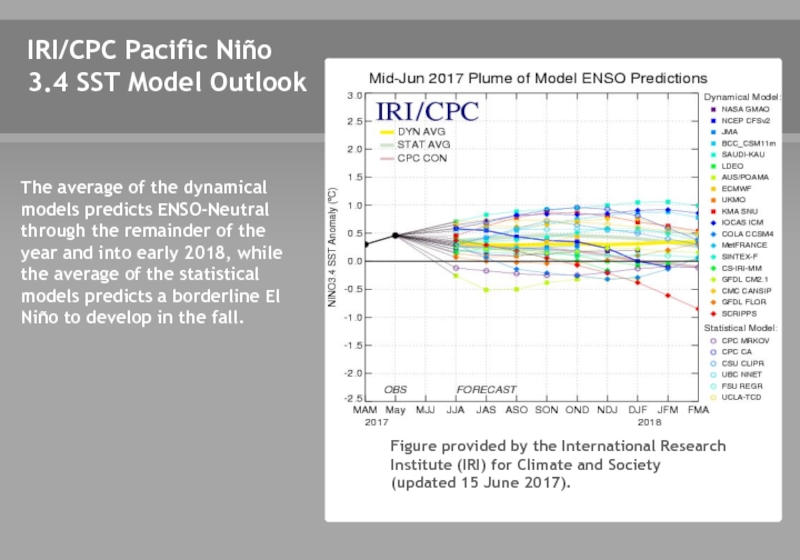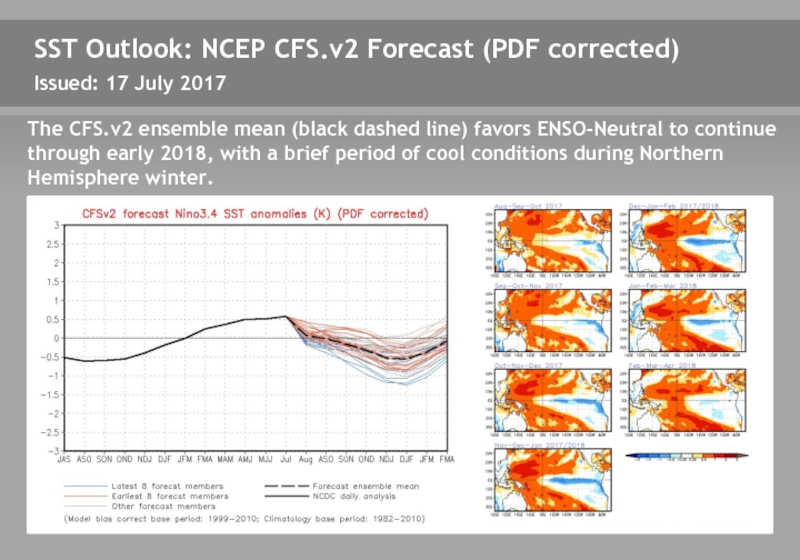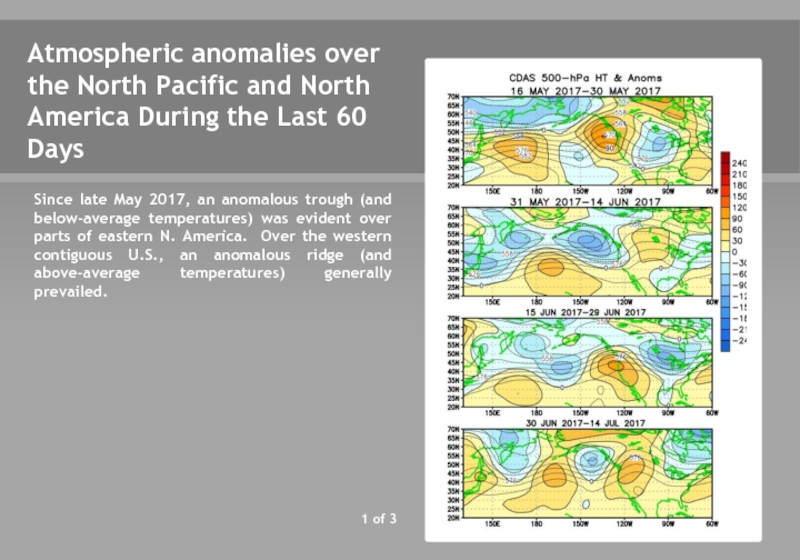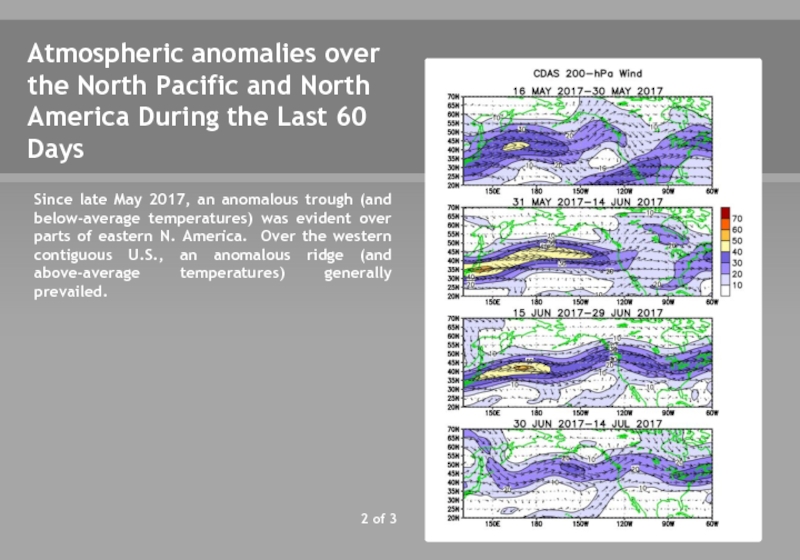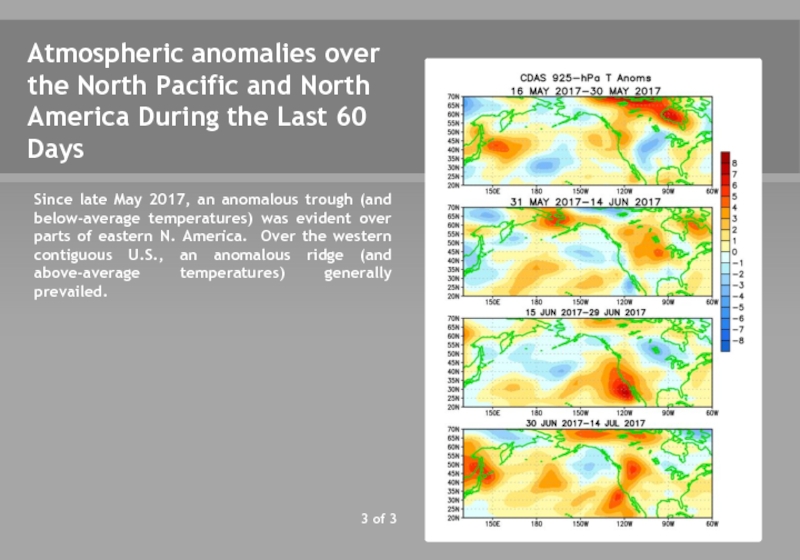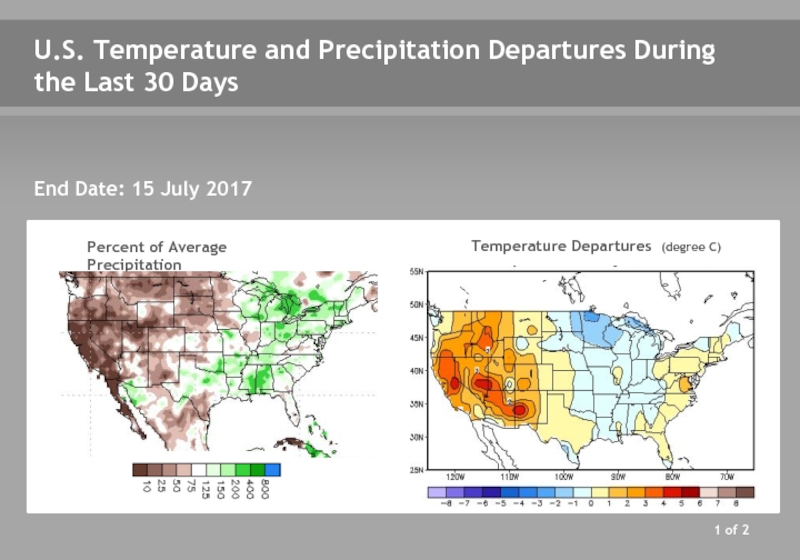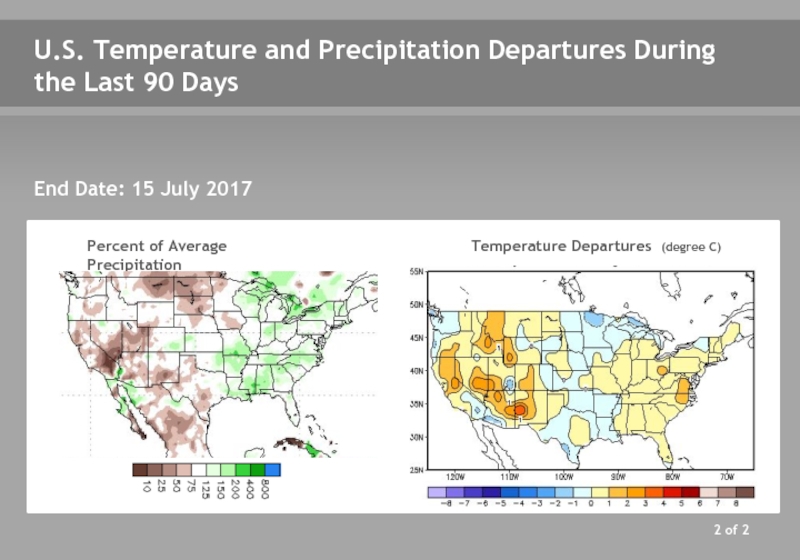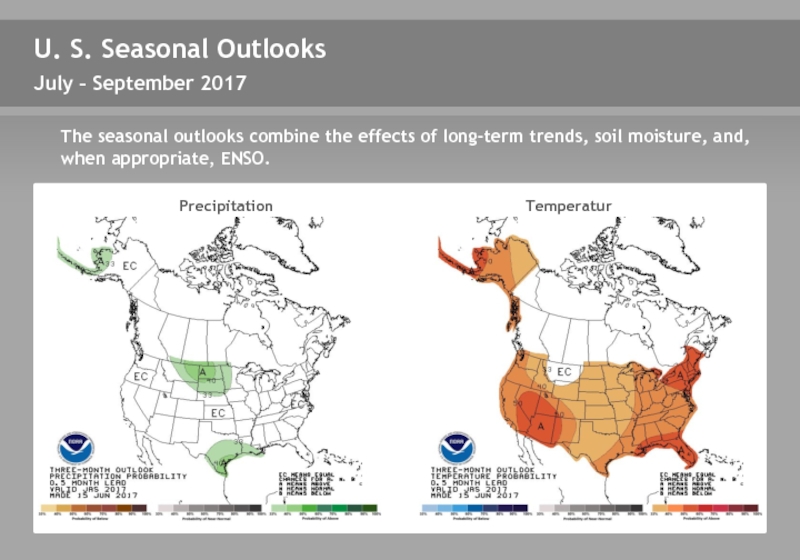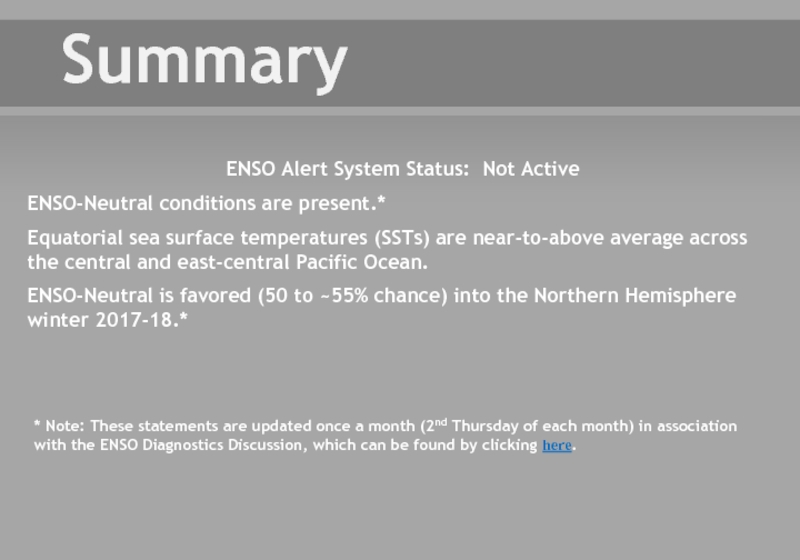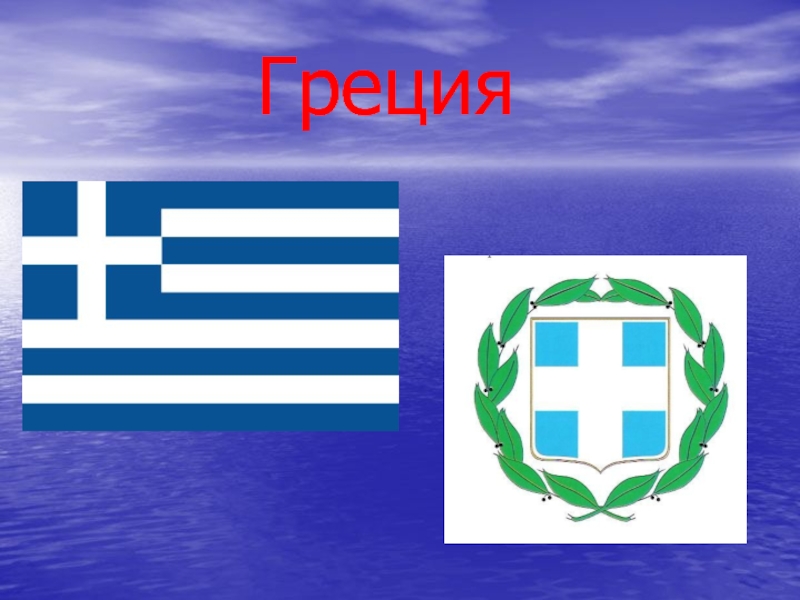- Главная
- Разное
- Дизайн
- Бизнес и предпринимательство
- Аналитика
- Образование
- Развлечения
- Красота и здоровье
- Финансы
- Государство
- Путешествия
- Спорт
- Недвижимость
- Армия
- Графика
- Культурология
- Еда и кулинария
- Лингвистика
- Английский язык
- Астрономия
- Алгебра
- Биология
- География
- Детские презентации
- Информатика
- История
- Литература
- Маркетинг
- Математика
- Медицина
- Менеджмент
- Музыка
- МХК
- Немецкий язык
- ОБЖ
- Обществознание
- Окружающий мир
- Педагогика
- Русский язык
- Технология
- Физика
- Философия
- Химия
- Шаблоны, картинки для презентаций
- Экология
- Экономика
- Юриспруденция
Enso: recent evolution, current status and predictions презентация
Содержание
- 1. Enso: recent evolution, current status and predictions
- 2. Outline Summary Recent Evolution and
- 3. Summary * Note: These statements are
- 4. From July through December 2016,
- 5. Niño Region SST Departures
- 6. SST Departures (oC) in the
- 7. Global SST Departures (oC) During
- 8. Weekly SST Departures during the
- 9. Change in Weekly SST Departures
- 10. Upper-Ocean Conditions in the Equatorial
- 11. Central and Eastern Pacific Upper-Ocean
- 12. Sub-Surface Temperature Departures in the Equatorial
- 13. Tropical OLR and Wind Anomalies
- 14. Intraseasonal Variability Intraseasonal variability in the
- 15. Weekly Heat Content Evolution in
- 16. Low-level (850-hPa) Zonal (east-west)
- 17. Upper-level (200-hPa) Velocity Potential Anomalies
- 19. Oceanic Niño Index (ONI) The ONI
- 20. NOAA Operational Definitions for El Niño
- 21. ONI (ºC): Evolution since
- 22. Historical El Niño and La Niña
- 23. CPC/IRI Probabilistic ENSO Outlook Updated: 13
- 24. IRI/CPC Pacific Niño 3.4 SST
- 25. SST Outlook: NCEP CFS.v2 Forecast (PDF
- 26. Atmospheric anomalies over the North
- 27. 2 of 3 Atmospheric anomalies
- 28. 3 of 3 Atmospheric anomalies
- 29. U.S. Temperature and Precipitation Departures
- 30. U.S. Temperature and Precipitation Departures During
- 31. U. S. Seasonal Outlooks Precipitation
- 32. Summary * Note: These statements are
Слайд 1ENSO: Recent Evolution, Current Status and Predictions
Update prepared by:
Climate Prediction Center
Слайд 2
Outline
Summary
Recent Evolution and Current Conditions
Oceanic Niño Index (ONI)
Pacific SST Outlook
U.S.
Summary
Слайд 3
Summary
* Note: These statements are updated once a month (2nd Thursday
ENSO Alert System Status: Not Active
ENSO-Neutral conditions are present.*
Equatorial sea surface temperatures (SSTs) are near-to-above average across the central and east-central Pacific Ocean.
ENSO-Neutral is favored (50 to ~55% chance) into the Northern Hemisphere winter 2017-18.*
Слайд 4
From July through December 2016, below average SSTs were observed over
During January and February 2017, above-average SSTs expanded within the eastern Pacific Ocean.
Since mid April 2017, near-to-above average SSTs were evident across most of the equatorial Pacific.
In the last week, positive SST anomalies persisted over the western to east-central Pacific Ocean.
Recent Evolution of Equatorial Pacific SST Departures (oC)
Слайд 6
SST Departures (oC) in the Tropical Pacific During the Last Four
During the last four weeks, equatorial SSTs were above-average across the western to east-central Pacific, and near-average in the eastern Pacific.
26
30
Слайд 7
Global SST Departures (oC) During the Last Four Weeks
During the last
26
30
Слайд 8
Weekly SST Departures during the Last Four Weeks
During the last four
Слайд 9
Change in Weekly SST Departures over the Last Four Weeks
During the
Слайд 10
Upper-Ocean Conditions in the Equatorial Pacific
The basin-wide equatorial upper ocean (0-300
The slope of the oceanic thermocline is least (greatest) during warm (cold) episodes.
Recent values of the upper-ocean heat anomalies (near average) and thermocline slope index (near average) reflect ENSO-Neutral conditions.
The monthly thermocline slope index represents the difference in anomalous depth of the 20ºC isotherm between the western Pacific (160ºE-150ºW) and the eastern Pacific (90º-140ºW).
Слайд 11
Central and Eastern Pacific Upper-Ocean (0-300 m)
Weekly Average Temperature Anomalies
Negative subsurface
Слайд 12
Sub-Surface Temperature Departures in the Equatorial Pacific
Most recent pentad analysis
Positive anomalies
During the last two months, positive subsurface temperature anomalies have expanded just below the surface near140ºW.
Слайд 13
Tropical OLR and Wind Anomalies During the Last 30 Days
Negative OLR
Low-level (850-hPa) winds were anomalous westerly over the east-central tropical Pacific.
Upper-level (200-hPa) winds were anomalous easterly over the east-central and eastern tropical Pacific.
Слайд 14
Intraseasonal Variability
Intraseasonal variability in the atmosphere (wind and pressure), which is
Related to this activity:
Significant weakening of the low-level easterly winds usually initiates an eastward-propagating oceanic Kelvin wave.
Слайд 15
Weekly Heat Content Evolution in the Equatorial Pacific
Equatorial oceanic Kelvin waves
From February 2017 through April 2017, positive subsurface temperature anomalies persisted in the western and eastern Pacific Ocean, with oceanic Kelvin waves resulting in anomalous temperature variability in the central Pacific.
During May 2017, positive subsurface temperature anomalies shifted eastward into the east-central Pacific associated with a weak downwelling Kelvin wave.
Since mid June, the largest positive subsurface temperature anomalies have been near 130-140ºW.
Слайд 16
Low-level (850-hPa)
Zonal (east-west) Wind Anomalies (m s-1)
From mid September 2016
Since January 2017, westerly wind anomalies were generally observed over the eastern Pacific Ocean.
In the last week, westerly wind anomalies were evident across the eastern Pacific, with easterly anomalies observed over the western and central Pacific.
Westerly Wind Anomalies (orange/red shading)
Easterly Wind Anomalies (blue shading)
Слайд 17
Upper-level (200-hPa) Velocity Potential Anomalies
Unfavorable for precipitation (brown shading)
Favorable for precipitation
Note: Eastward propagation is not necessarily indicative of the Madden-Julian Oscillation (MJO).
At least from January 2017 to present, anomalous upper-level divergence (green shading) generally persisted near Indonesia, while anomalous convergence (brown shading) persisted near the Date Line.
Eastward propagation of regions of upper-level divergence (green shading) and convergence (brown shading) is particularly evident during November 2016, January-February 2017, and April-May 2017.
Слайд 18
Outgoing Longwave Radiation (OLR) Anomalies
Drier-than-average Conditions (orange/red shading)
Wetter-than-average Conditions (blue shading)
From
Since mid-May 2017, OLR anomalies have been negative near Indonesia.
Слайд 19
Oceanic Niño Index (ONI)
The ONI is based on SST departures from
Defined as the three-month running-mean SST departures in the Niño 3.4 region. Departures are based on a set of improved homogeneous historical SST analyses (Extended Reconstructed SST – ERSST.v4). The SST reconstruction methodology is described in Huang et al., 2015, J. Climate, vol. 28, 911-930.)
It is one index that helps to place current events into a historical perspective
Слайд 20
NOAA Operational Definitions for El Niño and La Niña
El Niño: characterized
La Niña: characterized by a negative ONI less than or equal to -0.5ºC.
By historical standards, to be classified as a full-fledged El Niño or La Niña episode, these thresholds must be exceeded for a period of at least 5 consecutive overlapping
3-month seasons.
CPC considers El Niño or La Niña conditions to occur when the monthly Niño3.4 OISST departures meet or exceed +/- 0.5ºC along with consistent atmospheric features. These anomalies must also be forecasted to persist for 3 consecutive months.
Слайд 22
Historical El Niño and La Niña Episodes Based on the ONI
Recent Pacific warm (red) and cold (blue) periods based on a threshold of +/- 0.5 ºC for the Oceanic Nino Index (ONI) [3 month running mean of ERSST.v4 SST anomalies in the Nino 3.4 region (5N-5S, 120-170W)]. For historical purposes, periods of below and above normal SSTs are colored in blue and red when the threshold is met for a minimum of 5 consecutive over-lapping seasons.
The ONI is one measure of the El Niño-Southern Oscillation, and other indices can confirm whether features consistent with a coupled ocean-atmosphere phenomenon accompanied these periods. The complete table going back to DJF 1950 can be found here.
Слайд 23
CPC/IRI Probabilistic ENSO Outlook
Updated: 13 July 2017
ENSO-Neutral is favored (50 to
Слайд 24
IRI/CPC Pacific Niño 3.4 SST Model Outlook
Figure provided by the International
The average of the dynamical models predicts ENSO-Neutral through the remainder of the year and into early 2018, while the average of the statistical models predicts a borderline El Niño to develop in the fall.
Слайд 25
SST Outlook: NCEP CFS.v2 Forecast (PDF corrected)
Issued: 17 July 2017
The
Слайд 26
Atmospheric anomalies over the North Pacific and North America During the
1 of 3
Since late May 2017, an anomalous trough (and below-average temperatures) was evident over parts of eastern N. America. Over the western contiguous U.S., an anomalous ridge (and above-average temperatures) generally prevailed.
Слайд 27
2 of 3
Atmospheric anomalies over the North Pacific and North America
Since late May 2017, an anomalous trough (and below-average temperatures) was evident over parts of eastern N. America. Over the western contiguous U.S., an anomalous ridge (and above-average temperatures) generally prevailed.
Слайд 28
3 of 3
Atmospheric anomalies over the North Pacific and North America
Since late May 2017, an anomalous trough (and below-average temperatures) was evident over parts of eastern N. America. Over the western contiguous U.S., an anomalous ridge (and above-average temperatures) generally prevailed.
Слайд 29
U.S. Temperature and Precipitation Departures During the Last 30 Days
End Date:
Percent of Average Precipitation
Temperature Departures (degree C)
1 of 2
Слайд 30
U.S. Temperature and Precipitation Departures During the Last 90 Days
Percent of
Temperature Departures (degree C)
2 of 2
End Date: 15 July 2017
Слайд 31
U. S. Seasonal Outlooks
Precipitation
Temperature
July – September 2017
The seasonal outlooks combine the
Слайд 32
Summary
* Note: These statements are updated once a month (2nd Thursday
ENSO Alert System Status: Not Active
ENSO-Neutral conditions are present.*
Equatorial sea surface temperatures (SSTs) are near-to-above average across the central and east-central Pacific Ocean.
ENSO-Neutral is favored (50 to ~55% chance) into the Northern Hemisphere winter 2017-18.*
